Study the pedigree chart given, showing the Inheritance pattern of blood groups in a family and answer the following questions
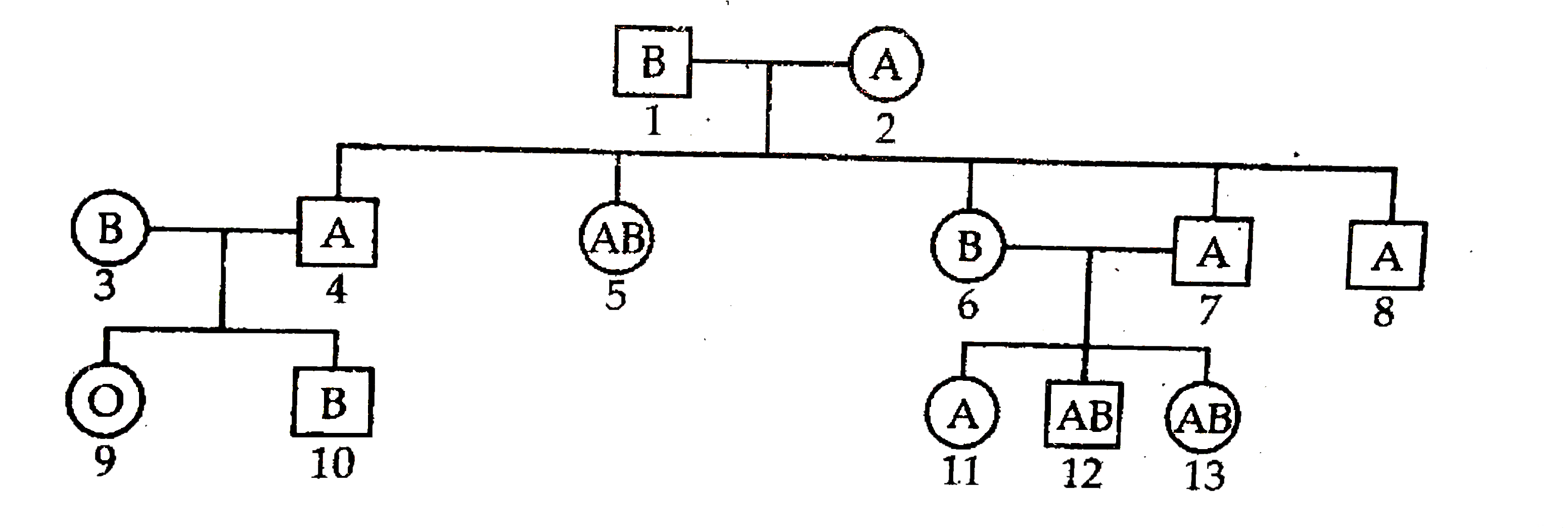
(a) Give the possible genotypes of the individuals 1 and 2.
(b) Which antigen or antigens will be present on the plasma membranes of the RBC's of individuals 5 and 9.
(c) Give the genotypes of the individuals 3 and 4.
Topper's Solved these Questions
- GENETICS AND EVOLUTION BOOK - TRUEMEN BIOLOGY ENGLISHCHAPTER - GENETICS AND EVOLUTION EXERCISE - SECTION-D
25 Videos
- GENETICS AND EVOLUTION BOOK - TRUEMEN BIOLOGY ENGLISHCHAPTER - GENETICS AND EVOLUTION EXERCISE - SECTION-B
38 Videos
- GeneticsBOOK - TRUEMEN BIOLOGY ENGLISHCHAPTER - GeneticsEXERCISE - ASSERTION AND REASON
122 Videos
- HUMAN HEALTH AND DISEASEBOOK - TRUEMEN BIOLOGY ENGLISHCHAPTER - HUMAN HEALTH AND DISEASEEXERCISE - MULTIPLE CHOICE QUESTIONS
209 Videos
Similar Questions
Study the given pedigree chart showing the pattern of blood group inheritance in a family
(a) Given the genotype of the following:
(i)Parents
(ii) The individual 'X' in second generation
(b) State the possible blood groups of the individual 'Y' in third generation
(c) How does the inheritance of this blood group explain codominance?
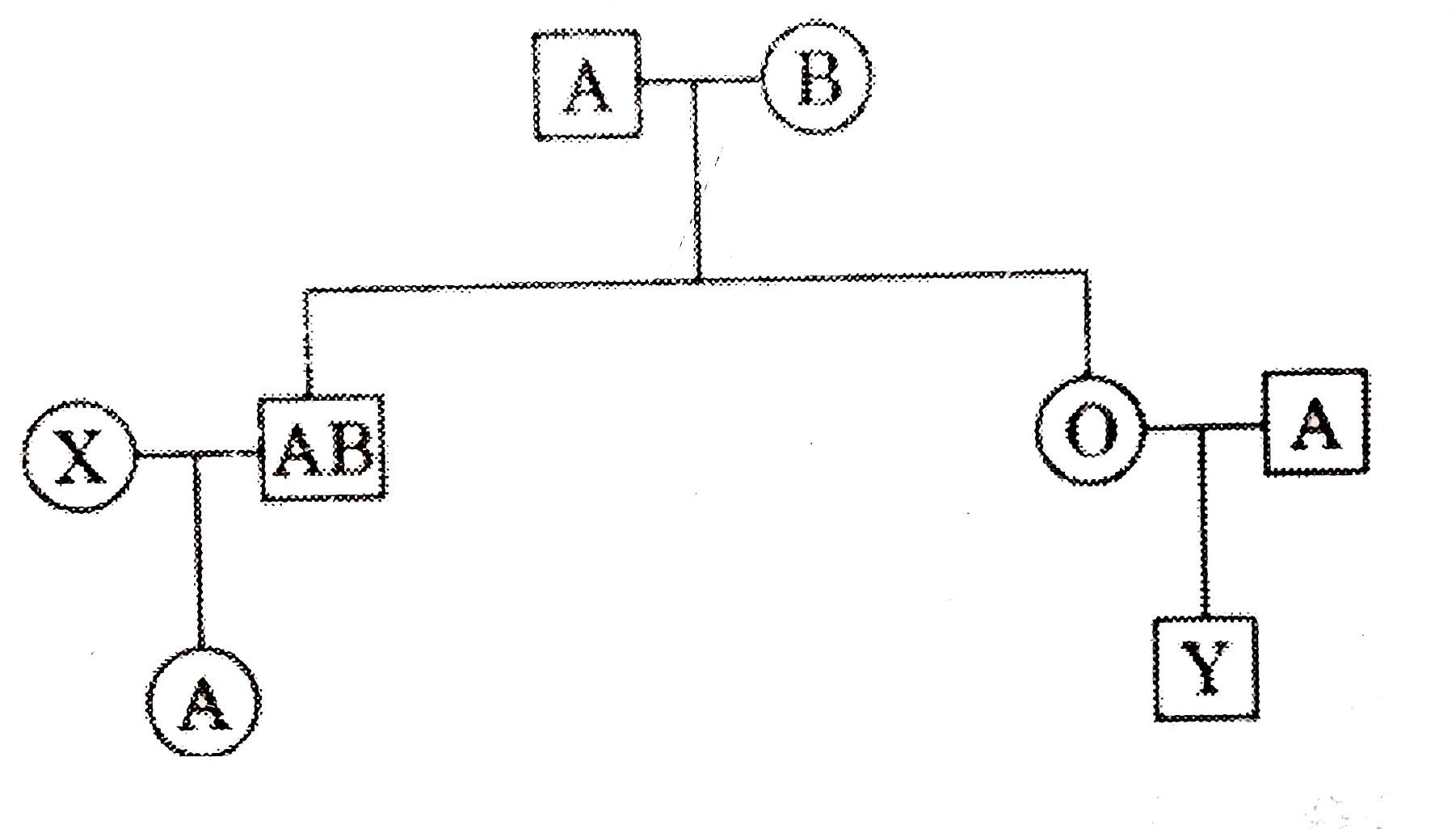
View SolutionHaemophilia is a sex linked recessive disorder of humans. The pedigree chart given below shows the inheritance of Haemophilia in one family. Study the pattern of inheritance and answer the questions given.
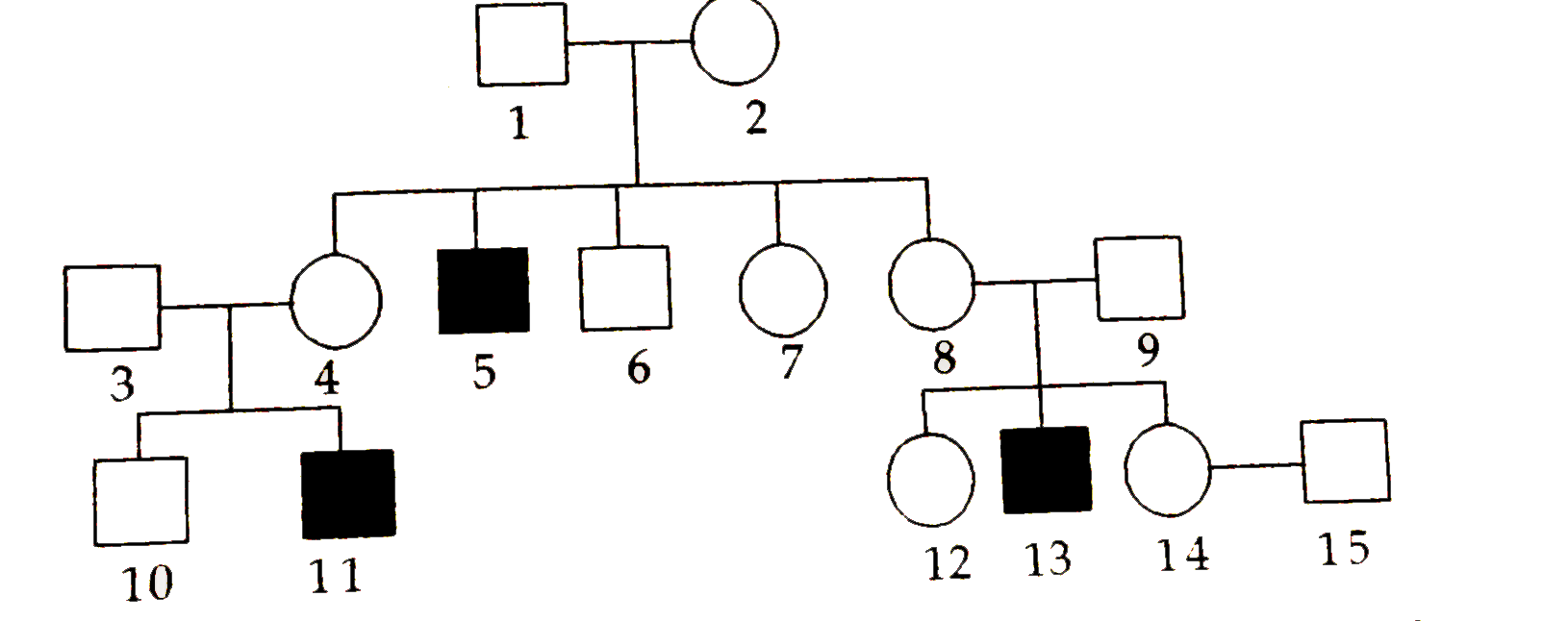
(a) Give all the possible genotypes of the members 4, 5 and 6 in the pedigree chart.
(b) A blood test shows that the individual 14 is a carrier of gaemophilia. The member numbered 15 has recently married the member numbered 14. What is the probability that their first child will be a haemophilic male ? Show with the help of Punnett square.
View Solution
Knowledge Check
The pedigree chart given below represents the pattern of inheritance of haemophilia in a family. Study it carefully and answer the following questions:
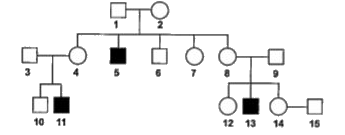
The possible genotype of member '5' is:AXHXHBXHYCXhYDNone of theseThe pedigree chart given below represents the pattern of inheritance of haemophilia in a family. Study it carefully and answer the following questions:
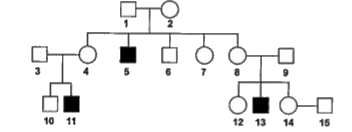
The possible genotype(s) of member '6' is/are:AXHXH,XHXhBXHYCXhXhDNone of theseThe pedigree chart given below represents the pattern of inheritance of haemophilia in a family. Study it carefully and answer the following questions:
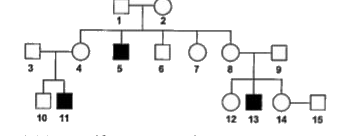
Haemophilia is a/an ______ traitADominantBAutosomalCX-linkedDY-linked
Haemophilia is a sex linked recessive disorder of humans. The pedigree chart given below shows the inheritance of haemophilia in one family. Study the pattern of inheritance and answer the questions given
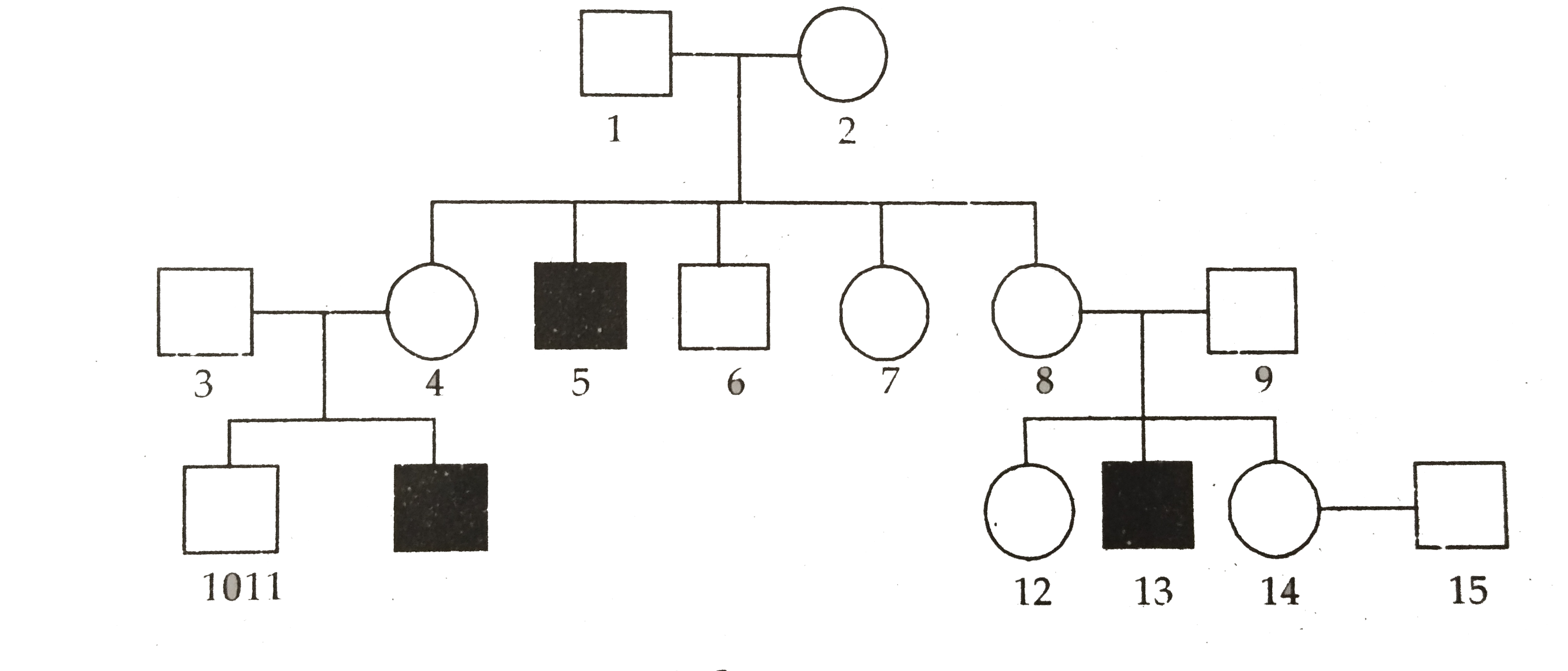
Give all the possible genotypes of the members 4,5 and 6 in the pedigree chart.
(b) A blood test shows that the individual 14 is a carrier of haemophilia. The member numbered 15 has recently married the member numbered 14. What is the probability that their first child will be a haemophilic male? Show with the help of Punnett square.
View SolutionHaemophilia is a sex-linked recessive disorder of humans. The given pedigree chart shows the inheritance of haemophilia in one family. Study the pattern of inheritance and answer the questions given.
(a) Give all the possible genotypes of the members 4, 5 and 6 in the pedigree chart. (b) A blood test shows that the individual 14 is a carrier of haemophilia. The member number 15 has recently married the member numbered 14. What is the probability that their first child will be a haemophilic male?
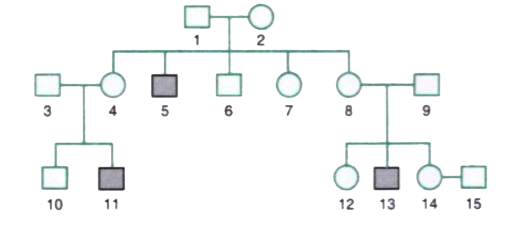
View SolutionStudy the given pedigree chart and answer the questions that follow:
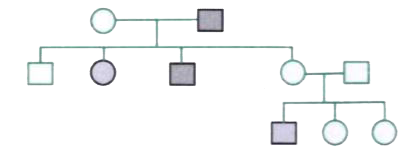
Give the genotype of the parents in generation I and their third and fourth child in generation II.
View SolutionThe pedigree chart given below represents the pattern of inheritance of haemophilia in a family. Study it carefully and answer the following questions:
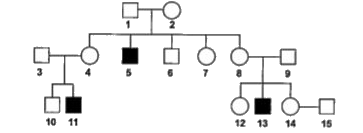
Identify the correct statement with respect to member '4':
View SolutionStudy the given pedigree chart showing the inheritance if an X-linked trait controlled by gene 'r'
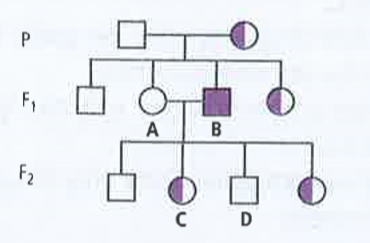
What will be the genotypes of individuals A,B,C and D respectively ?
View Solution

